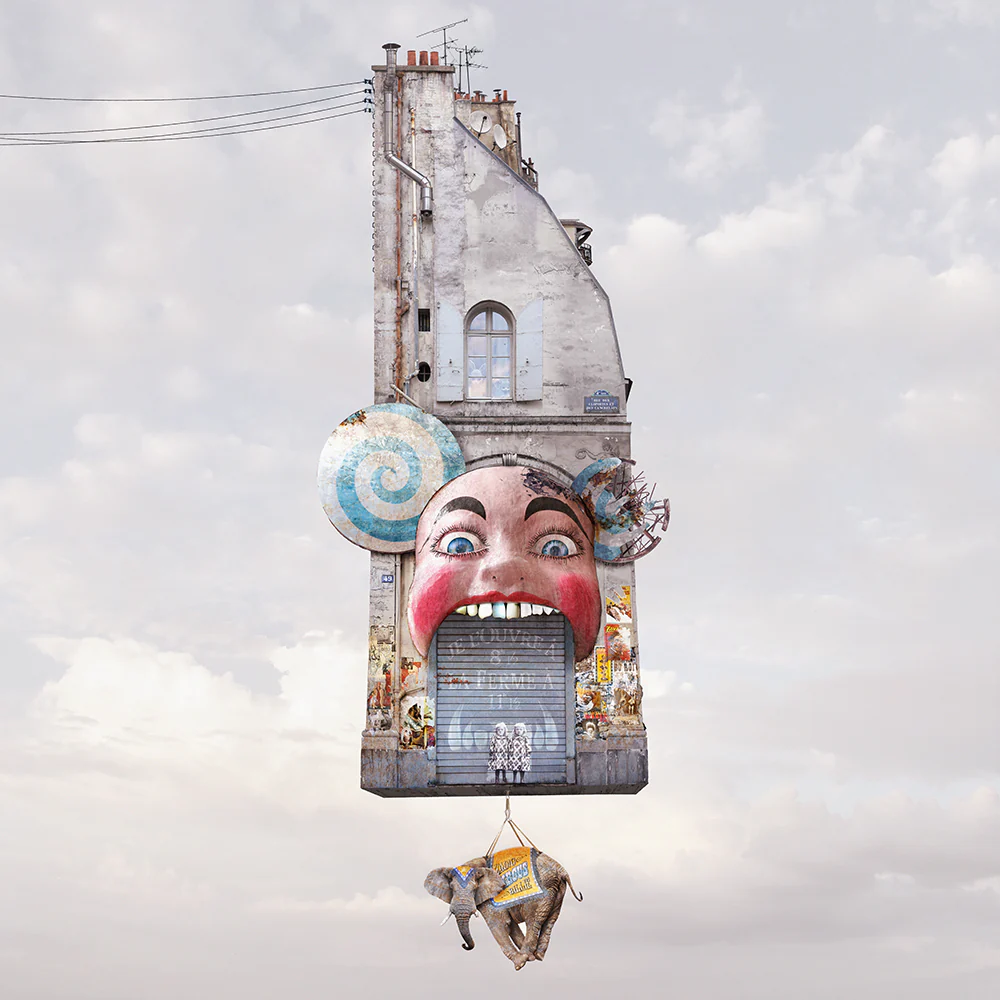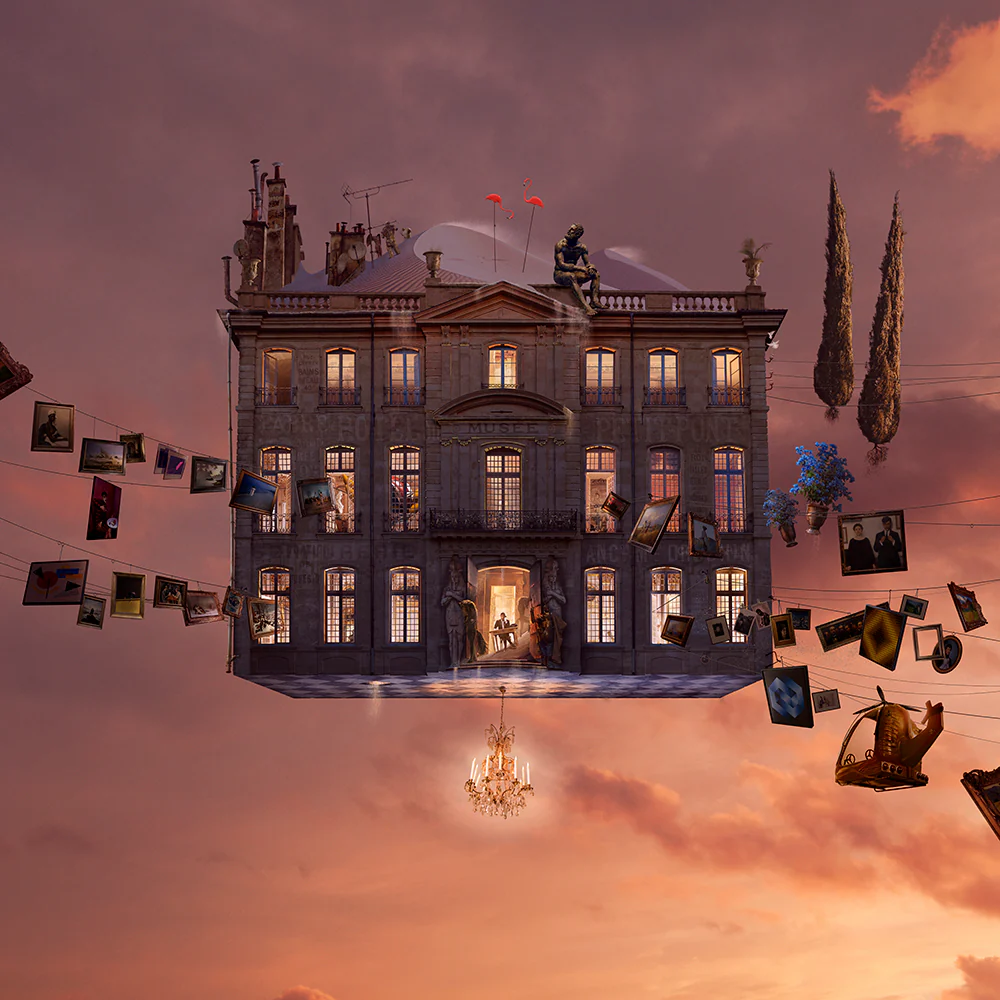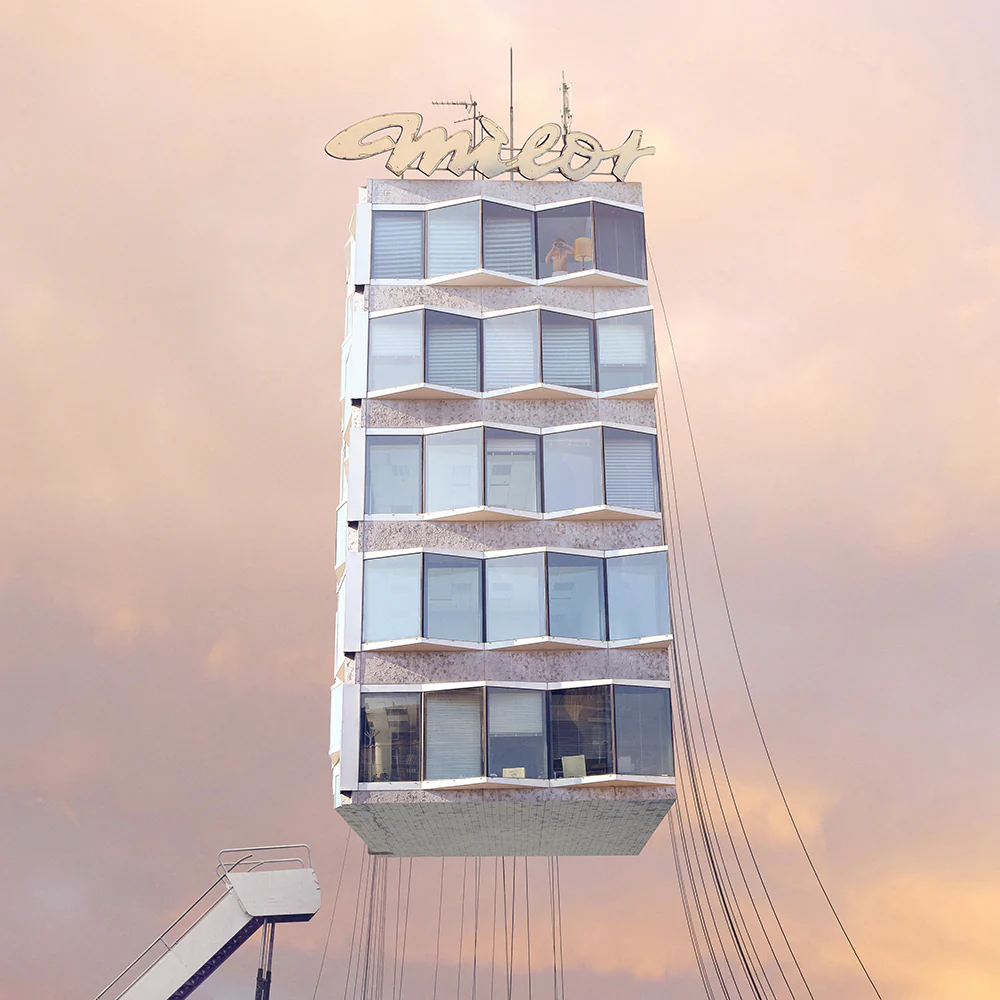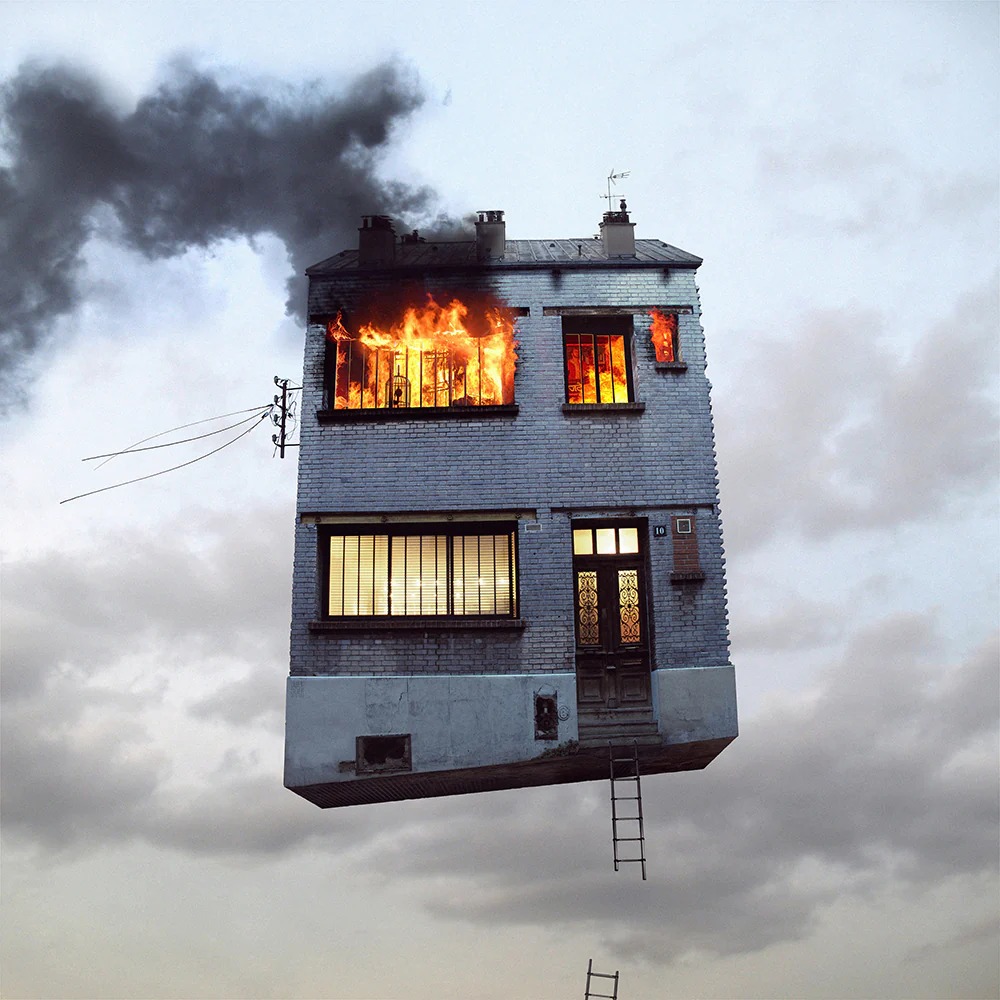Laurent Chéhère’s Flying Houses series is a gently alluring exploration of urban landscapes suspended between reality and boundless reveries, where buildings float in the sky like silent witnesses to forgotten lives. In these surreal photomontages, Chéhère elevates the mundane, transforming everyday architecture into poetic narratives that invite us to reimagine the stories hidden in them. Drawing inspiration from visionaries such as Jules Verne, Hayao Miyazaki, and Robert Doisneau, Chéhère’s work is less about the structures themselves and more about the subtle, unspoken histories they contain. His photographs blur the boundaries between the known and the unknown, capturing the ephemeral nature of dreams and visions. The world Chéhère creates is one where the familiar becomes strange, and the ordinary reveals itself in extraordinary beauty. Flying Houses is not just a series of images but a meditation on the fragility of life and the hidden poetry that exists in the spaces we often overlook.
When I decided to write about Flying Houses, I was inevitably intrigued by Chéhère’s method of combining different artistic motifs. He uses the buildings and elements of cosmopolitan neighbourhoods of Paris as creative devices. His method is masterfully liberating the forgotten, abandoned, and once-lived-in buildings from their urban confines, allowing them to drift into otherworldly realms, where they transform into vessels of dream and wonder. To me, this is a declaration that in decay and ruin, there still a possibility of the preservation of art, of wonder, and the miraculous act of feeling it, even recreating it.
Laurent Chéhère, The Hell Cabaret & The Elephant, Ed.2/5, 2017. Archival Pigment Print on Hahnemuehle Photo, 48 X 48 in.
Flying Houses is a result of artistic intrigue. When visiting this exhibition, my tour guide Nicole King of Bau-Xi, Toronto suggested viewing the photographs at first from afar and noticing what you can. Then step closer, and closer again—observe all the hidden intricacies in what you could not see before. I understood then that Flying Houses is not merely about taking a transformative approach to what we deem as regular—but an act of discovering, of noticing; each piece is a puzzle. “Capernaum” is a good example of this. The photograph is packed with objects and symbols. It is like a film, a museum or a surrealist vision. There is a horseman at the door from a Cocteau movie, old masterpieces and contemporary artworks are flying out of the house and hanging on ropes likes clothes to put out to dry. Figures peek through windows, like traces of life that linger there. Sculptures adorn and sand dunes cover the roof, a chandelier falls of the ground, trees and flowers are flying in the air. Observing them we become part of the magic; able to sense what is hidden.
Laurent Chéhère, Capernaum, Ed.5/5, 2024. Archival Pigment Print on Hahnemuehle Photo, 48 X 48 in.
I found myself particularly drawn to “The Voyeur”—a piece that lingers in softness, like a quiet whisper, both distant and intimate. The pastel sky, in the colours of sunset, evokes a sense of something familiar yet elusive, a fleeting moment I could not grasp. Upon first glance the scene felt deceptively simple, almost too tranquil, with all the blinds drawn, sealing the world within. However, on the top floor, there is a solitary figure, standing in the window, watching us with an unwavering gaze. This made me question, “Who is truly observing who?” The person looks at us, but we, too, are caught in the act of observing—there is a dance between gazes, a quiet exchange between the artwork and the viewer. Then on a closer observation, I noticed that not all the windows are covered, the bottom floor is visible. A coat rack, a bookshelf, as if someone had been in it just moments ago. The building seems to be floating, tethered to the ground by power lines, holding onto the earth with a desperate grip.
Laurent Chéhère, The Voyeur, Ed.6/7, 2012. Archival Pigment Print on Hahnemuehle Photo, 36 X 36 in.
In stark contrast I also loved “Fire” because it is not quite like the others in this exhibition. A house set ablaze, smoke permeating the walls, leaking outside into the foggy grey air. There was no whimsy here—just some sort of unflinching portrayal of loss, of destruction. It is the most realistic piece in the show, therefore, when I was looking at this quiet tragedy, I recognized how it lingered between the fantastical and the real, striking and raw. It is terrible to see a home, whether detested or beloved, burn so brightly. Knowing it may eventually turn to ashes, yet for now suspended from that inevitable collapse, frozen within the frame.
Laurent Chéhère, Fire, Ed.3/5, 2012. Archival Pigment Print on Hahnemuehle Photo, 48 X 48 in.
I appreciate Chéhère’s attitude that lets viewers create their own narratives, uncovering hidden layers in his work, embracing the subjectivity of art. This series is a gift to our individual experiences, insights, and narratives which can be nothing but different from one another’s—each interpretation as unique as the viewer.
The photographs are mesmerizing and after you indulge yourself in creating your own narratives, you arrive at the question: How was all this created? How did the artist materialize his visions? Chéhère wrote, “The first ‘Flying Houses’ were photographed by chance in the street and the photomontage was rudimentary of about ten elements. My method has evolved into a gigantic puzzle, I photograph a facade in several pieces to have a sharp rendering. My latest works use hundreds of photos, sometimes containing 1500 layers.” He starts by drawing a shape, then makes hundreds of photographs of many angles of buildings, streets, gutters, dirt, snow, traces of time. He also searches the internet for interior design elements and for various characters of well known stories. He concludes by saying that his work is never finished.
Yehyun Lee
Images are courtesy of Bau-Xi Gallery, Toronto.
*Exhibition information: Laurent Chéhère, Flying Houses, November 7 – 28, 2024, Bau-Xi Gallery | Dufferin, Main Floor Gallery, 1384 Dufferin Street, Toronto. Gallery hours: Daily 10 am – 5:30 pm.




